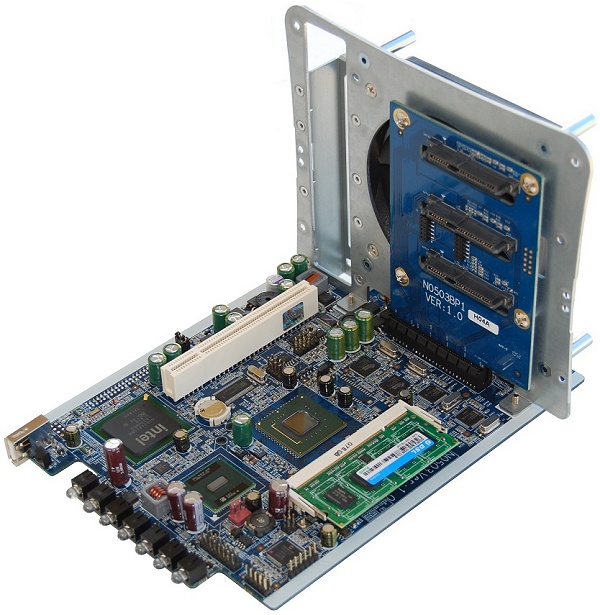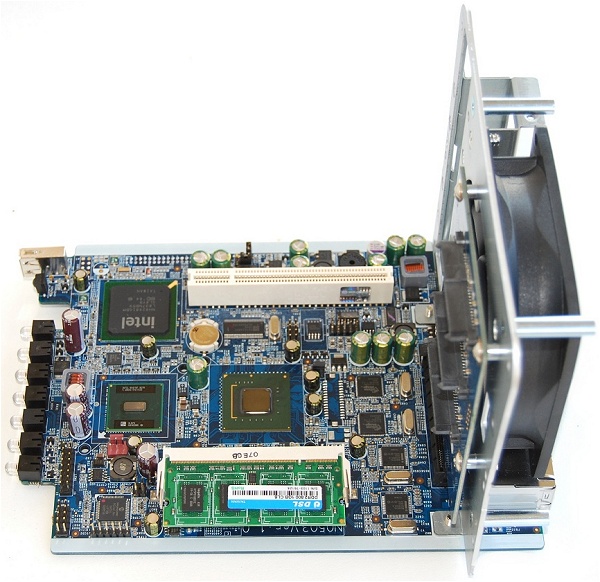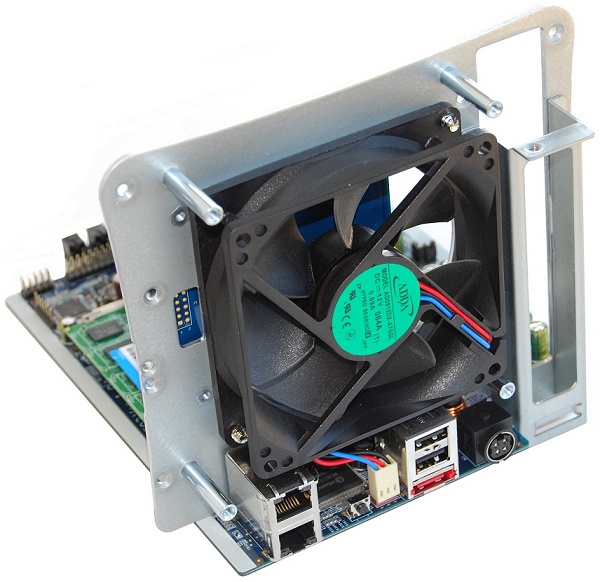Hardware
Getting inside the N3200XXX is relatively easy: You remove four screws on back plastic cover followed by ten more screws that secure the motherboard and SATA hot-swap module.



Once inside we find a number of chips crammed onto a tiny 6.5 x 6.1-inch PCB, including the Intel Atom N270. The processor features Intel's "Diamondville" architecture which is a single-core design that operates at 1.60GHz (12x133) and sports a 512KB L2 cache.

Thecus added a single SO-DIMM slot occupied by a 1GB DDR2-800 (CL6) memory module. The CPU and RAM are connected by Intel's 945GSE chipset which houses an integrated GMA 950 graphics core, though this isn't used by the N3200XXX.



The 945GSE's ICH7-M southbridge chip supports two SATA 3Gb/s ports without RAID, four USB 2.0 ports and a single IDE port which we'll discuss shortly. The ICH7-M has a TDP (Thermal Design Power) of just 3.3 watts while the 945GSE northbridge consumes 6 watts. Both ratings are higher than the 2.5 watts awarded to the Atom N270 processor.

We were impressed to find that Thecus included a pair of quality Intel Gigabit Ethernet controllers by employing two Intel 82574L chips, which consume only 0.7 watts, use the PCI Express v1.1 (2.5GT/s) bus for maximum throughput and support features such as Jumbo Frames.

Because the Intel 945GSE chipset only provides two SATA ports without RAID support, Thecus has been forced to seek outside help. The company has opted for a pair of Silicon Image Sil3132 controllers, which use the PCI Express bus for greater bandwidth and supply four more SATA ports. We believe these controllers are used to provide the three internal SATA ports as well as the external eSATA port.


Tucked away on the belly of the motherboard is a small green module that is connected using the chipset's IDE bus. A company called Afaya manufacturer supplies what they call a Micro Disk Module, which is essentially an SSD that can use the SATA, eSATA or IDE bus depending on configuration.
Versions range in capacity from 128MB up to 16GB and use SLC NAND flash memory. The N3200XXX is outfitted with the smallest version, a 128MB module intended to house the operating system.


Moving back to the topside of the motherboard, there is a PCI Express x4 slot that connects the three SATA hot-swap modules to the board. This has become a popular design choice among NAS manufacturers as it makes installation quick and tidy by removing SATA power and data cables from the equation.

Finally, you may have noticed the board's vacant PCI slot. Having read the user manual front to back, I found no mention of its purpose. After contacting Thecus they said it's a remnant of a previous functionality that is no longer offered. We couldn't find any info on this "previous functionality," but regardless, the PCI slot now serves no purpose.
